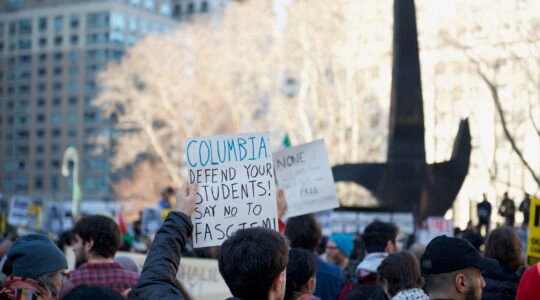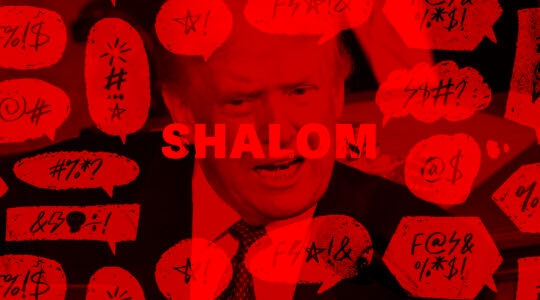Kol Nidre’s dusk brings delicate tension to a Jew’s consciousness. Whatever differences between us, on Yom Kippur they fade away. All differences (and any of us can easily think of two dozen argument starters) seem so earthly, even meaningless, at this chilling time of year when we declare that by nothing less than “the authority of the heavenly court, by the authority of the earthly court, with the consent of this congregation, we declare it lawful to pray with sinners.”
There is no congregation without those with whom we disagree, even those we callously consider “sinners” — often for no sin greater than the temerity to disagree with us.
How transient are our earthbound sins when — tradition tells us — we are praying alongside the dead? In this season of Yizkor, there is no theme in Yom Kippur’s arsenal of prayers more haunting than the reminder that our fate is being sealed, who will live, who will die. We light yahrzeit candles; perhaps those candles have our names on it, sadly enough. In every congregation, at every family table, it is impossible to forget those who were with us just a year ago. And we contemplate an intimate truth: some of us won’t be present by Yom Kippur next.
Rabbi Aviva Richman, of Yeshivat Hadar, reminds us that in old Europe yahrzeit candles were not store-bought but handmade, and the extra time that took was devoted to meditations: “Women would take string to the cemetery and measure the circumference of relatives’ graves. They would then cut this string into wicks, and dip the wicks into wax, over and over again, as they recited prayers, to make large candles.” These candles were brought to shul, providing light in pre-electric times. Bella Chagall (wife of the artist Marc) wrote in her memoirs that candles were made for the living, with informal prayers offered for a spouse, a child, a friend. As the names were intoned, “threads are drawn, yellow with wax and tears.” Then a candle was made for the dead, who were asked to pray for the living.
Rabbi Richman adds that each family’s candles, for the living and dead, were brought to shul, poetically joining the congregation, praying for each other, provoking “compassion without boundaries, surpassing even the most stark boundary of all, between life and death.”
Like the tolling bells that toll for thee, our yahrzeit candles burn for all of us. Once, we felt to our core that any Jew’s death, or mourning, or economic concerns were as real as our own, whether they were shot in a San Diego shul, or beaten to a pulp until falling on a cold Brooklyn sidewalk, or were Holocaust survivors fighting poverty in old age, or whether a Jew who was ill, fighting for life. They were us.
Yom Kippur is compared by the sages to Purim (their names echo each other). On Yom Kippur, as on Purim, we have the heightened awareness that we live, too often, in masquerade, to the point of wondering who we really are. And yet, solemn Yom Kippur is considered a celebration; there is no greater gift than the possibility of penance, fixing the past, and the realization that there is no communal prayer without sinners or the grace of the dead.
We’ve been through a lot as a people in the past year, and yet we are masters of survival.
Bob Dylan and Robert Hunter (who died in Elul) sing about finding out “something only dead men know.”
Their prayer goes, “Stake my future on a hell of a past
Looks like tomorrow is a-coming on fast
Ain’t complaining about what I got
Seen better times but who has not?”
May all our candles burn on.
The New York Jewish Week brings you the stories behind the headlines, keeping you connected to Jewish life in New York. Help sustain the reporting you trust by donating today.




